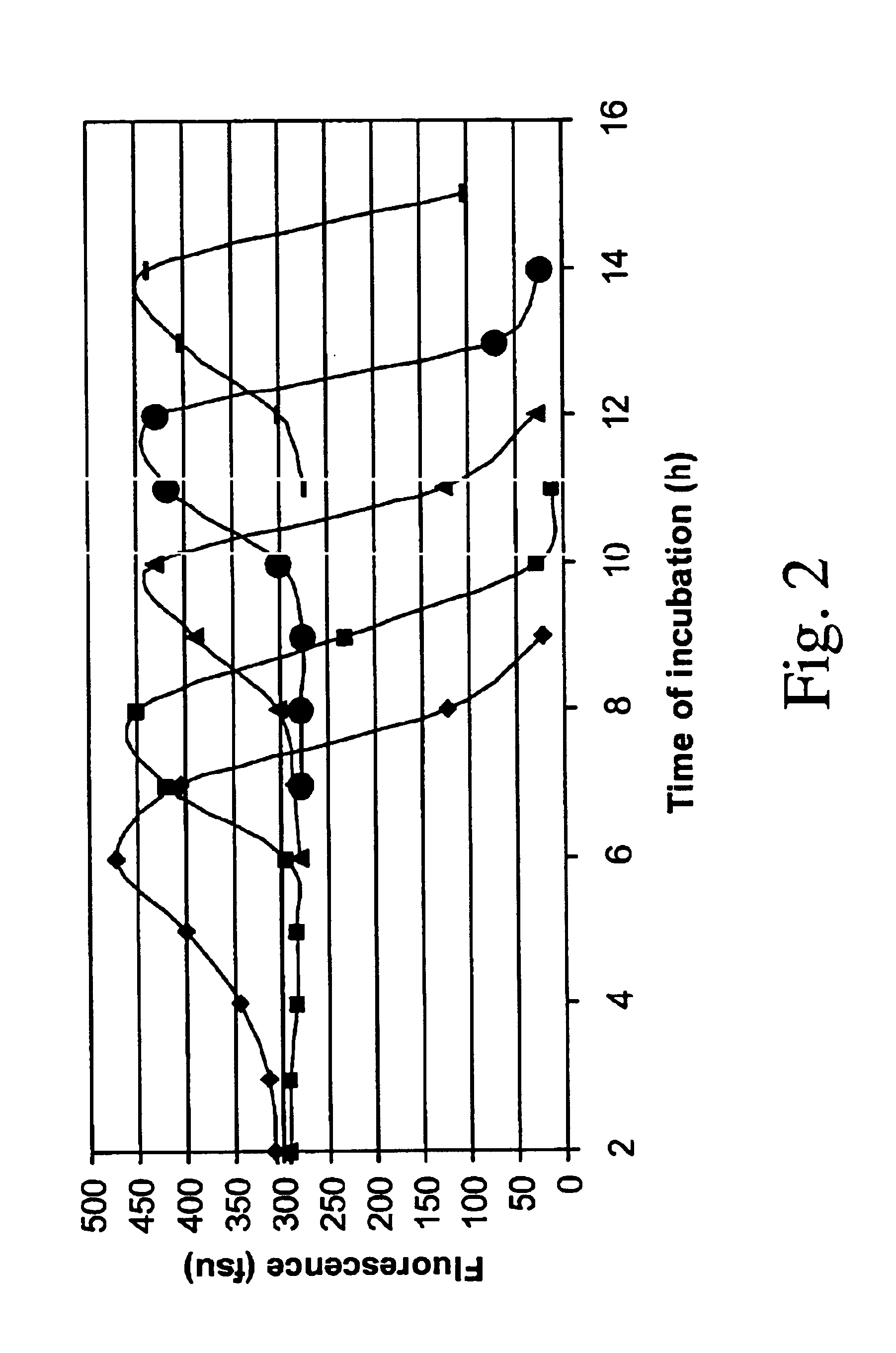Rapid method of detection and enumeration of sulfide-producing bacteria in food products
a technology of sulfide-producing bacteria and food products, which is applied in the field of rapid methods for the detection and quantification of sulfide-producing bacteria in fish products, can solve the problems of limited microbial analysis of fish to total viable counts, agar plate method has the same disadvantages as all other agar plate methods, and does not give the possibility of early warning
- Summary
- Abstract
- Description
- Claims
- Application Information
AI Technical Summary
Problems solved by technology
Method used
Image
Examples
examples
[0027]Referring now to FIG. 1, the results for rapid enumeration of S. putrefaciens in pure cell culture cultivated in iron broth are shown. FIG. 1 shows the relationship between fluorescence and concentration of bacteria with regard to the time of detection. When bacterial concentrations are initially high, the “time to detection” (TTD) or “detection time” is very early in the incubation period, whereas, when initial concentration is low, “time to detection” is much later in the incubation period.
[0028]Referring to FIG. 2, the graph shows the development of fluorescence in samples of cod contaminated with varying levels of S. putrefaciens. The samples are cultivated in iron broth and incubated at 30° C. As bacteria increase in each sample, there is an increase in fluorescence over a period of time which is indicated by the upward curve in the graph. When the fluorescence begins to decrease as more iron sulfide is formed, a peak has been formed. In FIG. 2, the cod sample having abou...
PUM
 Login to View More
Login to View More Abstract
Description
Claims
Application Information
 Login to View More
Login to View More - R&D
- Intellectual Property
- Life Sciences
- Materials
- Tech Scout
- Unparalleled Data Quality
- Higher Quality Content
- 60% Fewer Hallucinations
Browse by: Latest US Patents, China's latest patents, Technical Efficacy Thesaurus, Application Domain, Technology Topic, Popular Technical Reports.
© 2025 PatSnap. All rights reserved.Legal|Privacy policy|Modern Slavery Act Transparency Statement|Sitemap|About US| Contact US: help@patsnap.com



